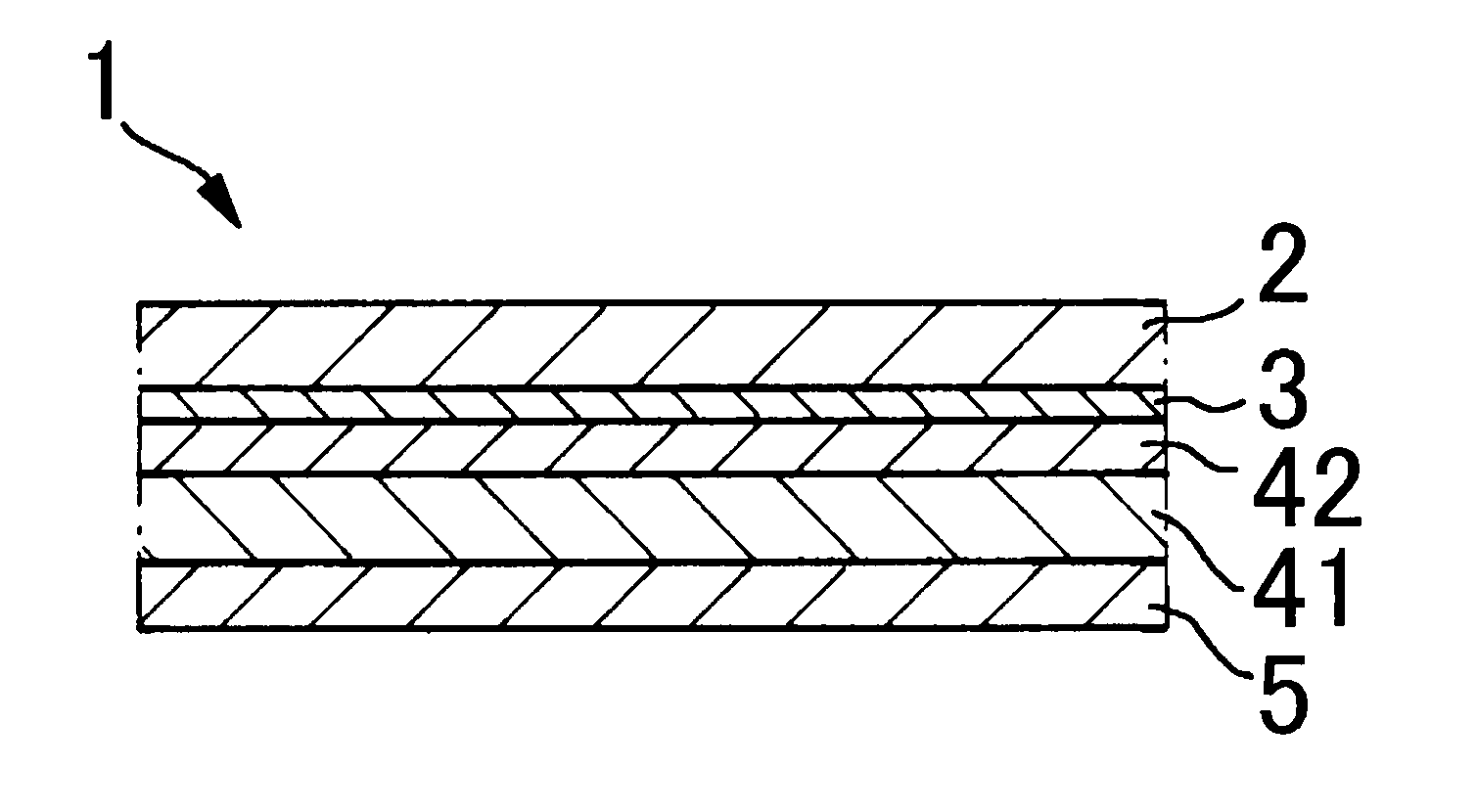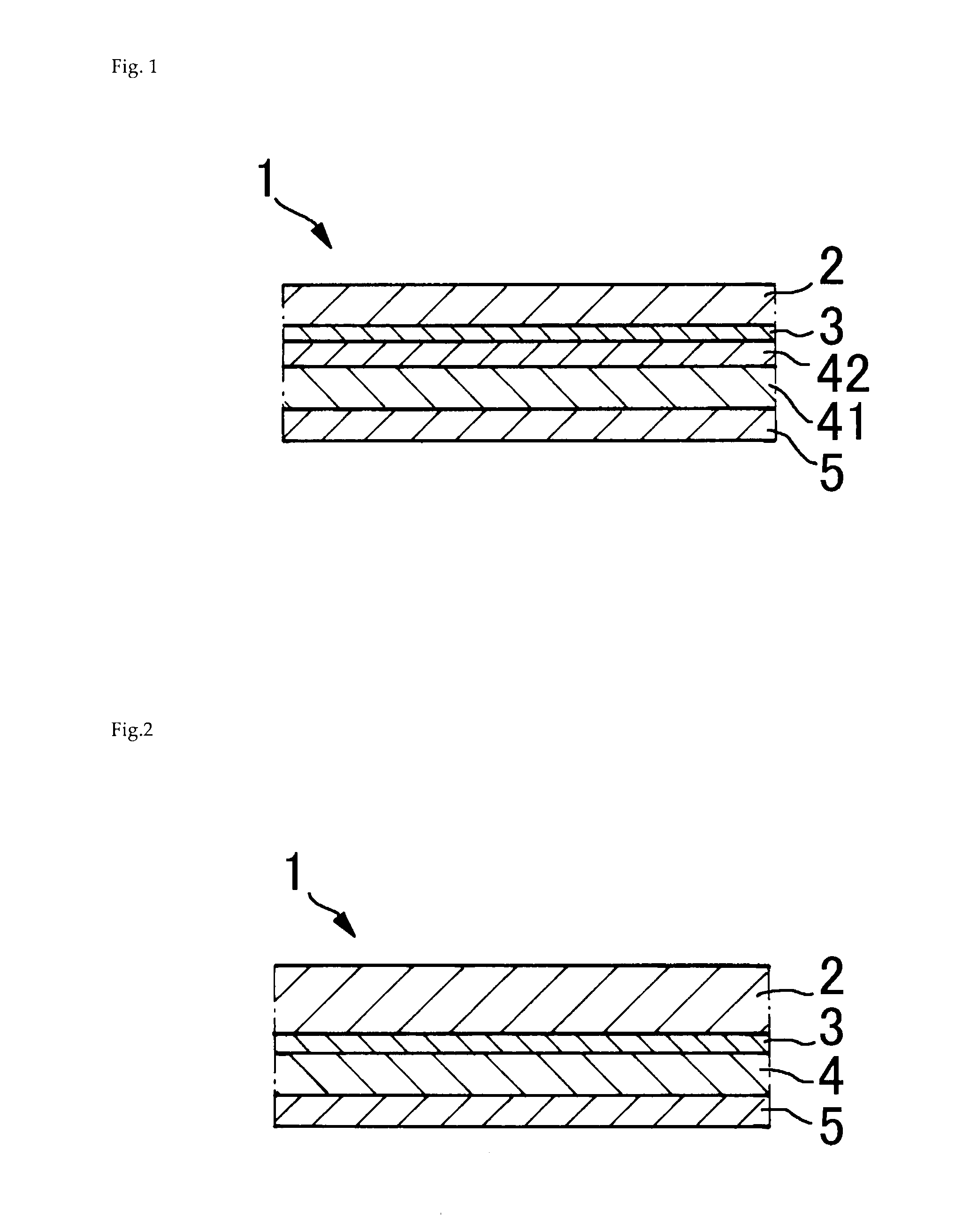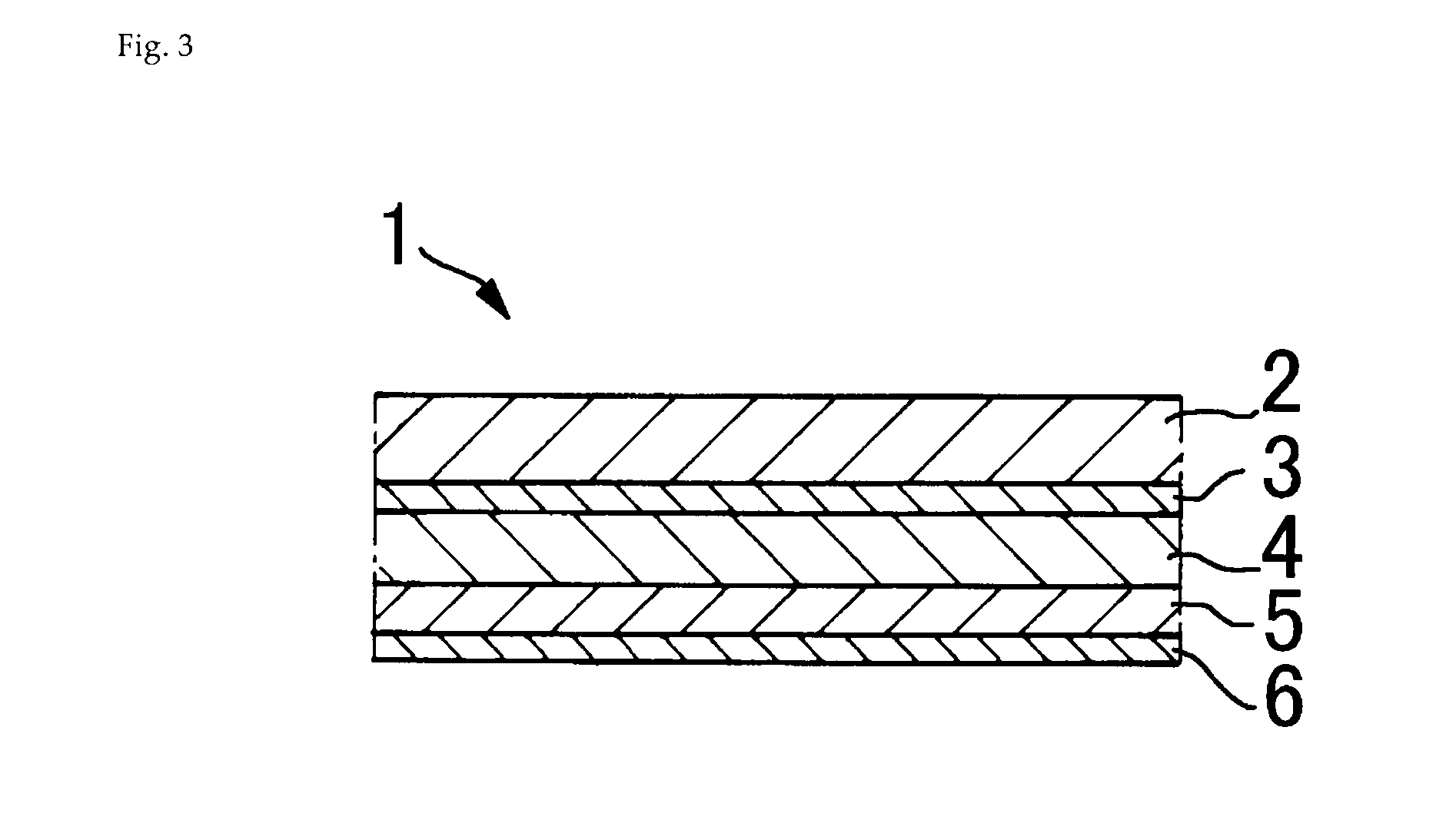Cover film
- Summary
- Abstract
- Description
- Claims
- Application Information
AI Technical Summary
Benefits of technology
Problems solved by technology
Method used
Image
Examples
example 1
[0095]100 parts by mass of Tuftec H1041 (Asahi Kasei Chemicals), a hydrogenated styrene-butadiene-styrene triblock copolymer and 25 parts by mass of an anti-blocking master batch “PEX ABT-16” (Tokyo Printing Ink) comprising 50 mass % low-density polyethylene, 45 mass % silica and 5 mass % talc (hereinafter referred to as “Anti-blocking Agent 1”) were pre-blended in a tumbler, then kneaded at 200 ° C. using a uniaxial extruder of diameter 40 mm to obtain a resin composition for the sealant layer at a line speed of 20 m per minute.
[0096]This resin composition for the sealant layer and a m-LLDPE “Evolue SP3010” (Prime Polymer) for a first intermediate layer were separately extruded from a uniaxial extruder, then extrusion laminated using a multi-manifold T-die, to form a two-layered film wherein the thicknesses of the sealant layer and the first intermediate layer were respectively 10 μm and 20 μm.
[0097]On the other hand, a two-solution curable polyurethane anchor coating agent was app...
example 12
[0100]A two-layered film formed of an intermediate layer (first intermediate layer) / sealant layer was prepared in the same manner as Example 1 aside from the thickness of the first intermediate layer being 30 μm.
[0101]On the other hand, a two-solution curable polyurethane anchor coating agent was applied to a biaxially stretched polyethylene terephthalate film (thickness 16 μm) constituting a substrate layer using a roll coater, and this coated surface was laminated with the intermediate layer-side surface of the above-described two-layer film by means of dry lamination to obtain a laminated film. After subjecting the sealant layer-side surface and substrate layer-side surface of the laminated film to a corona treatment, a cationic anti-static agent “SAT-6C” (Nihon Junyaku) was coated onto both surfaces of the laminated film using a gravure coater, resulting in a cover film having a substrate layer / intermediate layer / sealant layer structure.
example 19
[0103]A urethane anchor coating agent was coated to a dry thickness of about 1 μm onto the surface of a biaxially stretched polyethylene terephthalate film (thickness 25 μm) constituting the substrate layer, then m-LLDPE “Harmolex NH745N” (Japan Polyethylene) constituting the intermediate layer was extrusion coated to a thickness of 15 μm using a T-die, resulting in a two-layer film having a substrate layer / intermediate layer structure. Furthermore, as a resin constituting a sealant layer, a resin composition comprising 100 parts by mass of “Tuftec H1041” (Asahi Kasei Chemicals), a hydrogenated styrene-butadiene-styrene triblock copolymer, and 25 parts by mass of an anti-blocking master batch “PEX ABT-16” (Tokyo Printing Ink), was laminated to a thickness of 20 μm by extrusion coating onto the intermediate layer-side of this two-layer film to form a laminated film. After subjecting the sealant layer-side surface and substrate layer-side surface of the laminated film to a corona trea...
PUM
| Property | Measurement | Unit |
|---|---|---|
| Percent by mass | aaaaa | aaaaa |
| Percent by mass | aaaaa | aaaaa |
| Percent by mass | aaaaa | aaaaa |
Abstract
Description
Claims
Application Information
 Login to View More
Login to View More - R&D
- Intellectual Property
- Life Sciences
- Materials
- Tech Scout
- Unparalleled Data Quality
- Higher Quality Content
- 60% Fewer Hallucinations
Browse by: Latest US Patents, China's latest patents, Technical Efficacy Thesaurus, Application Domain, Technology Topic, Popular Technical Reports.
© 2025 PatSnap. All rights reserved.Legal|Privacy policy|Modern Slavery Act Transparency Statement|Sitemap|About US| Contact US: help@patsnap.com



